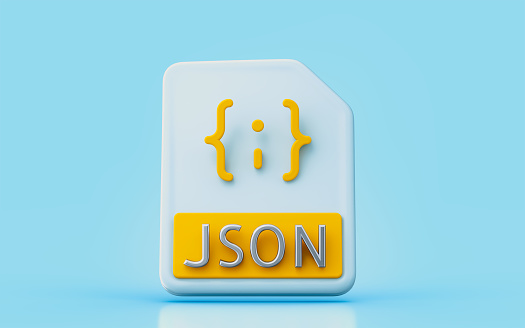XML vs JSON: XML and JSON are popular formats for structuring and transmitting data over the web. XML, which stands for Extensible Markup Language, has existed since the late 1990s. It is widely used for various purposes, including document exchange, web services, and database management. JSON, which stands for JavaScript Object Notation, is a newer format developed in the early 2000s. It has gained popularity due to its simplicity, ease of use, and compatibility with modern web technologies.
XML and JSON serve similar purposes but have some key syntax, structure, and usage differences. In this article, we’ll explore the benefits and drawbacks of each format and provide some guidance on which one might be better suited for specific use cases in web development.
Benefits and Drawbacks of Using XML

XML has been a mainstay of web development for over two decades, offering clear advantages over other data formats. One of the primary benefits of XML is its flexibility – it can be used to define custom tags and attributes that make it easy to represent complex data structures. Additionally, XML can describe a document’s structure and content in an easily machine-readable way, making it useful for various purposes, from database management to document exchange.
However, XML does have some drawbacks that can make it less appealing in certain situations. One of the biggest drawbacks is its verbosity – XML documents can be quite large, leading to slower transmission times and increased server load. Additionally, XML can be more difficult to work with than other data formats, such as JSON, which has a simpler syntax and require less overhead. Finally, some developers find that XML’s rigid structure can make it difficult to work with in certain contexts, such as when dealing with unstructured data.
Overall, in the debate between XML vs. JSON, XML remains a powerful and useful tool for web development. Still, carefully weighing its benefits and drawbacks is important to determine whether it’s the right choice for a project.
Benefits and Drawbacks of Using JSON

JSON, on the other hand, has become increasingly popular in recent years, particularly in the context of web development, due to its lightweight, easy-to-read format. One of the main benefits of JSON is its simplicity – its syntax is easy to understand and use, making it a great choice for developers who want to transmit data quickly and efficiently.
Another advantage of JSON is that it can be easily parsed and used in JavaScript applications, one of the most widely used programming languages on the web. This means that JSON can be used to power dynamic, interactive web applications without requiring a lot of additional overhead or setup.
However, there are some drawbacks to using JSON as well. One of the main drawbacks is its lack of flexibility – while JSON can be used to represent simple data structures, it doesn’t have the same level of customization as XML, which means that it can be more difficult to represent more complex data. Additionally, JSON can be more difficult to read and understand than XML for humans, making it more challenging to work with in some contexts.
JSON is a useful tool for web developers who want to transmit data quickly and easily. Still, it’s important to consider its limitations and whether it’s the right choice for a given project.
Comparing XML and JSON Syntax
XML (Extensible Markup Language) and JSON (JavaScript Object Notation) are popular data interchange formats in web development. While they serve similar purposes, they differ in syntax and structure. In this section, we will compare the syntax of XML vs JSON to help you understand the differences.
XML Syntax
XML is a markup language that uses tags to define elements and attributes to provide additional information about those elements. This particular syntax is hierarchical, meaning every tag must have a closing tag. Here is an example of XML syntax:
<book>
<title>Harry Potter and the Philosopher's Stone</title>
<author>J.K. Rowling</author>
<price>10.99</price>
</book>
In this example, the book Tag is the root element, and it contains three child elements: title, author, and price. Each element contains text enclosed within their respective opening and closing tags.
JSON Syntax
On the other hand, JSON is a lightweight data-interchange format that uses a syntax similar to JavaScript object literals. This is based on key-value pairs and is less hierarchical than XML. Here is an example of JSON syntax:
{
"book": {
"title": "Harry Potter and the Philosopher's Stone",
"author": "J.K. Rowling",
"price": 10.99
}
}
In this example, a root element is an object that contains a single key-value pair, where the key is book And the value is another object that contains three key-value pairs: title, author, and price. Unlike XML, JSON does not require closing tags; the values can be of different data types.
While XML uses tags to define elements and attributes, JSON uses a syntax based on key-value pairs. XML is more hierarchical, whereas JSON is less hierarchical and supports different data types. Ultimately, the choice between XML vs. JSON depends on the project’s specific needs and the developer’s preferences.
Choosing the Right Format for Your Project
 source: pexels
source: pexels
Performance Considerations
Regarding performance, XML and JSON have their strengths and weaknesses. This section will discuss some performance considerations when choosing between these two formats.
XML Performance
XML is a verbose format, and its hierarchical structure requires more characters to represent the same data than JSON. This means that XML documents can be larger than their JSON counterparts, resulting in slower data transmission and higher storage requirements.
Another factor that affects XML performance is parsing. XML parsing can be slower than JSON parsing because of the complexity of its hierarchical structure. This can impact the performance of applications that need to parse large XML documents frequently.
JSON Performance
JSON is a lightweight format designed to be easy to read and write. Because it uses a simple syntax based on key-value pairs, JSON documents are typically smaller than XML documents, making them faster to transmit and store.
Another advantage of JSON is its parsing speed. Because of its simple structure, JSON parsing is generally faster than XML parsing. This can significantly affect the performance of applications that need to parse large amounts of data frequently.
Regarding performance considerations, JSON is generally faster and more efficient than XML. However, the choice between the two formats ultimately depends on the project’s specific needs. If the data requires a hierarchical structure with more complex data types, XML may be the better choice. JSON may be the way to go if data transmission speed and parsing performance are more critical.
Accessibility and Browser Support
Accessibility and browser support are important factors when choosing between XML vs JSON for your web development project. This section will discuss the accessibility and browser support of these two formats.
XML Accessibility and Browser Support
XML is a widely adopted standard, and most web browsers support it. However, accessibility can be an issue for some users, particularly those who use assistive technologies like screen readers. This is because XML documents can be complex and difficult to navigate for users who rely on screen readers.
XML also has a steeper learning curve than JSON, making it harder for developers to work with. This can be a barrier to adoption, particularly for those new to web development.
JSON Accessibility and Browser Support
JSON is also widely adopted and is supported by most web browsers. Because of its simple syntax, JSON is generally more accessible than XML for users who rely on assistive technologies. This is because JSON documents are easier to navigate and understand.
In terms of browser support, JSON is also widely supported, with few exceptions. However, it’s worth noting that some older browsers may not support JSON natively, so additional code may be required to parse JSON data.
Data Structure
One of the most important factors to consider when choosing between XML vs. JSON is the data structure of your project. XML is a hierarchical format well-suited for complex data structures with nested elements and attributes. On the other hand, JSON is a simpler format that is best for flat data structures with key-value pairs.
